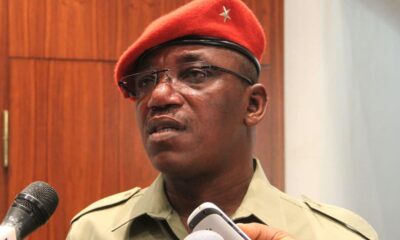News
Hardship: Nigerians In Urban Areas Now Embrace Firewood, Charcoal For Cooking

Nigerians in urban areas may have returned to the most affordable cooking fuels – charcoal and firewood, due to the increase in the price of cooking gas.
Charcoal and firewood were used by mostly the locals and people living in semi-urban areas before the advent of cooking gas.
However, when cooking gas came into the picture, these other primitive fuels were relegated to the background because the difference between them, particularly on ease of use, was like day and night.
Now, it appears ease of use is no longer considered when people can no longer afford the cooking gas.
And so, a return to the cheaper option takes pre-eminence.
A random check, shows that, a portion of charcoal sells for between N500 and N1,000.
Also, the price of firewood goes for N700 per bundle of four sticks. This is against a 3kg of gas which costs around N4000
Economy&Lifestyle also discovered that in a bid to further cut cost, some Nigerians in urban areas now source firewood from bushes and farms .
This method of firewood sourcing is mostly found in rural areas.
An encounter with Mr Yekini Abdullahi, a vulcaniser, revealed that the firewood is placed in coal pots, instead of charcoal, when cooking.
“My wife and I spend so much on cooking gas and in this economic condition, such spending is not sustainable.
“Although charcoal is cheaper, the difference in price is not that much, so we decided to source for firewood from building sites or in some bush parts around our neighbourhood
“So far, the experience hasn’t been any bad and we are enjoying cooking with firewood, which in any case, we didn’t spend much on.
“We place the firewood in a coal pot, make fire, and the deed is done.”
Mrs. Victoria Shodimu, a hairdresser said: “I live in a new site where there are nearby bushes.
“This Lagos lifestyle has really entered our head that we have forgotten how we were surviving in the village.
“Before now, I used to buy cooking gas, but now, it is no go area f. A kilogramme is now sold for N1,500, worse than kerosene which you can get for N1,250 per litre.
“Charcoal is also expensive but not as much as gas.
“Putting on my village brain, I decided to source for firewood in the bushes from tiny trees.
“I place them in the coal pot instead of the ground which you know is made from cement.
“My husband complained at first. But when he saw that it reduced the cost for us, he accepted.
“This is what many of my friends in this city do now, especially when they are cooking food like beans, bean cake and in large quantities.”
Mrs. Oluchi Udechukwu said she gets her firewood from sites where buildings are under construction.
“This has saved me alot from spending my money on cooking gas or kerosene.
“Now I cook with firewood. I visit sites of buildings under construction to pick those discarded woods.
“I store them in a dry place and place them in coal pots to avoid messing up the cement floor with charcoal.
“I prepare anything with wood.
Whenever I can’t get wood from sites, I enter nearby bushes to source for firewood.
“I put them in sack bags to avoid people raising eyebrows and asking questions.
“You have to kill shame to survive in this era.”
The recent National Bureau of Statistics, NBS, Nigeria Residential Energy Demand-Side Survey Report showed that about 39 percent of households acquire fuel woods by cutting/collection.
The report further stated: “More than half of the fuelwood cut/collected by households are branches, stems, and trees. “The results reveal that 55.3 percent of fuelwood cut/collected were branches, stems and trees, while 67.8 percent of households used fuelwood either for domestic, agricultural ,commercial, cultural or religious purposes.”


 Top Stories22 hours ago
Top Stories22 hours agoZacch Adedeji @ 47: Celebrating a Man Of Exceptional Grace, Excellence

 Top Stories22 hours ago
Top Stories22 hours agoHow Fubara missed the opportunity to settle with Wike – Rivers APC chairman

 Top Stories23 hours ago
Top Stories23 hours agoCabal in Tinubu’s goverment more dangerous than Buhari’s – Dalung

 Politics23 hours ago
Politics23 hours agoNigerian Police Cybercrime Unit Recovers ₦8 Billion, Named Best In Africa

 Sports23 hours ago
Sports23 hours agoEric Chelle: 9 Things To Know About Super Eagles New Coach

 News23 hours ago
News23 hours agoNnamdi Kanu’s lawyer rejects Nigerian govt’s request to resume trial

 Entertainment23 hours ago
Entertainment23 hours agoWhy I Almost Got Sacked As “who Wants To Be A Millionaire” Host – Frank Edoho

 Top Stories17 hours ago
Top Stories17 hours agoStop Dreaming Of Presidency, Tinubu Till 2031 – Igbokwe Tells Obi And Atiku







